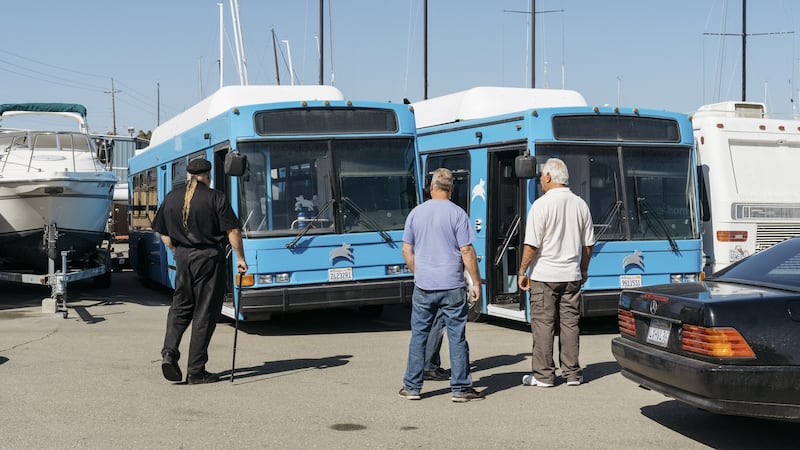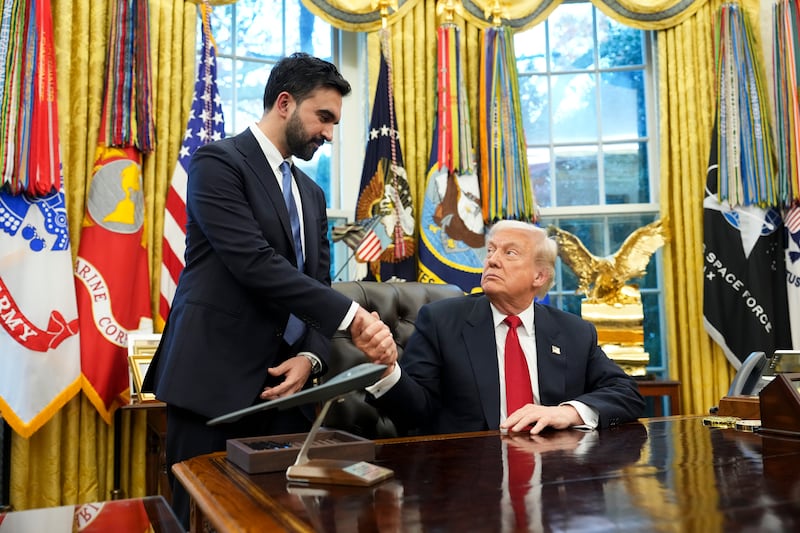The first thing you notice when hanging around technology start-ups is the cultural importance that Silicon Valley ascribes to snacking. A company’s snack bar often stands as a rough proxy for the scope of its ambitions.
Square, Jack Dorsey's payments business, has a gleaming coffee bar with a barista who conducts classes on the best ways to brew. On one trip to Facebook, I was treated to an otherworldly bag of popcorn. And just about every company has a refrigerator or two stocked with Hint, a subtly flavoured brand of bottled water that seems to flow as freely in San Francisco as the tears of the people evicted to make room for the incoming software engineers.
Even when a start-up's dreams are deferred, the snacks hang on, as I learned in a recent visit to the buses that were once owned by Leap Transit, a start-up that had aspirations of revolutionising urban transportation.

Leap, which raised $2.5 million from some of the industry’s best-known investors, charged riders $6 to get across San Francisco, nearly three times the cost of riding a city bus. Its primary draw was luxury. Each bus had a wood-trimmed interior outfitted with black leather seats, individual USB ports and wifi. The buses also offered a steady stream of high-end snacks, sold via app.
I had come to see the buses to find out what it looks like when a start-up bites the dust. The luxury vehicles were up for auction; Leap filed for bankruptcy in July. The end for Leap apparently came so suddenly that its founders didn't have time to remove much from the vehicles. Inside each bus sitting in an out-of-the-way parking lot near Oakland, California, was a state registration form pinned to the wall, a bundle of iPhone and HDMI cables, and a display case full of snacks. Among the choices were packages of That's It – vegan, gluten-free, non-GMO fruit bars – and organic, paleo Simple Squares.
Overextended ambition
Leap is one of at least several dozen tech companies that have failed this year. Their deaths are illuminating; dead start-ups show us which investors’ theories are bogus, which technologies aren’t ready for prime time and which common ways founders overextend themselves.
In particular, Leap’s death suggests one emerging cause of start-up doom, a problem that also did in the anonymous social-network Secret: too close an association with Silicon Valley’s tech-bro sensibilities.
Leap, in retrospect, was a bold idea that might have had legs. Muni, San Francisco's public bus system, is overloaded and underfunded, and the success of ride-hailing apps like Uber suggests a public willingness to try new tech-enabled options. But in its design and marketing – in its full-frontal embrace of the easily pilloried paleo-snack-bar techie lifestyle – Leap exuded a kind of bourgeoisie exceptionalism that fed into the city's fears of gentrification and won it few fans. As I stood inside the abandoned buses, it became obvious why the start-up failed: Leap was created by and for techies. It was born inside the bubble, and it could never escape.
Start-up deaths often go unstudied. Silicon Valley stands out for the way it embraces failure, and it’s true the “We Failed!” start-up postmortem note has become a staple on publishing sites like Medium. Still, there’s a natural disinclination among entrepreneurs and investors to discuss the demises of their companies in much depth.
Kyle Kirchhoff, the co-founder and chief executive of Leap, was among several founders of dead companies who did not respond to my requests for interviews. Thanks to such reluctance, no one quite knows how many tech start-ups are dying, or why. "There's a lot of fanfare when companies get funded or acquired, but people bury the dead pretty quietly," said Anand Sanwal, the chief executive of CB Insights, a firm that keeps stats on the start-up market. He added that the task was complicated by the fact many failed start-ups don't actually die – they limp along for years, underperforming.
Sanwal estimated the number of start-up failures increased in 2015, but said he believed the uptick most likely stemmed from the founding and funding of many more companies a few years ago, as the tech market began heating up.
Leap’s troubles started early. It began a private bus service in San Francisco in 2013. Even though it had no valid city or state licence, the company decided to use city bus stops to pick up and drop off passengers – a practice that earned it immediate scorn from city officials and cast the service as part of the tech-versus-everyone-else narrative of gentrification in San Francisco. The company went on hiatus in 2014 while its founders worked with state and city officials to win a preliminary certificate to operate.
When Leap began operating again in March, the company struck a sour note with the news media, embracing so many techie stereotypes you could be forgiven for thinking it was cooked up by the writers of HBO's Silicon Valley.
Young people only
In an interview with
TechCrunch
, Kirchhoff called the buses “a blend between a coffee shop, a workspace and something that feels like your living room”. He demonstrated, for a reporter from the
Verge
, how riders could order organic juice. As
Katie Dowd
, a writer for SFGate.com, noted: “Predictably but hilariously, there is no one who appears to be over the age of 35 in any of the publicity photos or video. Muni is for old people, obviously.”
Making matters worse, the San Francisco Chronicle reported Leap had removed wheelchair accessibility ramps from its buses to make room for "plush leather armchairs".
In May, two months after Leap began operating, the California Public Utilities Commission sent the company a cease-and-desist letter because the company had started offering service before completing the conditions of its original approval notice. On its Facebook page, Leap promised to take a short break while it worked through the issues. It has been dormant ever since.
By the time of its bankruptcy auction earlier this month, which attracted only a handful of bidders, Leap was all but forgotten. In its bankruptcy filing, Leap reported it made nearly $21,000 in the two months during which it offered service. That turned out to be less than two of its buses fetched at auction: one sold for $11,100, and another for $12,100.
It could have helped Leap to take a less outwardly oppositional stance in its conduct and its branding. The company entered the thicket of San Francisco regulatory and civic debate without spending much time to win over fans in the community. Its onboard aesthetics and services lit up every gentrification warning sign.
Some companies can escape their image. Uber, whose endless run-ins with authorities have covered its brand in an ethical haze, is still experiencing growth because the product remains truly useful to riders and drivers. But most companies can’t repeat unlikely success.
Leap tried. Despite the snacks, it failed.
- (New York Times News Service)


















